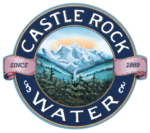
Where does the tap water in Los Angeles come from, and how is it treated before it arrives at homes, schools, and businesses?
That’s a question most people don’t ask because they take for granted the fact that water comes out of the faucet when they turn it on. Here’s a brief rundown of how the water gets to your home:
According to the LA Country Water District, water is collected either from the ground or the Colorado River Aqueduct. The Colorado River Aqueduct stretches 240 miles from Lake Havasu on the California-Arizona border to Lake Mathews in Riverside County. The water, in its raw form, is unfit for human consumption and must be heavily treated before it arrives at the tap. Once it’s collected, the water is then disinfected and pumped into the distribution system.
How is it disinfected? The LACWD says,
“The imported water is generally treated using conventional treatment methods including coagulation, flocculation, sedimentation, filtration, and disinfection.”
Here’s what those processes include:
Coagulation: The coagulation process involves the addition of a chemical that is rapidly dissolved and distributed evenly throughout the water and causes particles in the water to cling together, or coagulate.
Flocculation: Another chemical is added to the water, which is then sent through large paddles and slowly churned to further increase the size of the coagulated material.
Sedimentation: After flocculation, the water and floc moves slowly through large basins known as sedimentation or settling basins. The water moves very slowly through these basins due to their large size. This allows the floc to settle to the bottom of the basin. The floc that falls to the bottom of the basins is collected into a hopper by large rotating scrapers where it is removed several times daily by the plant operators. Clear water above the floc layer flows out of the sedimentation basin and to the filters.
Filtration: The filtration apparatus is a concrete box which contains sand (which does the filtering), gravel (which keeps the sand from getting out) and an underdrain(where the filtered water exits). After the filter is operated for a while, the sand becomes clogged with particles and must be backwashed. Flow through the filter is reversed and the sand and particles are suspended. The particles are lighter than the sand, so they rise up and are flushed from the system. When backwashing is complete, the sand settles down onto the gravel, flow is reversed and the process begins again.
Disinfection: To prevent contamination with germs and bacteria, water companies add a disinfectant —usually either chlorine or chloramine— that kills disease-causing germs. Chlorine has been used to disinfect public drinking water supplies in the U.S. since 1908.
Even with all this treatment, the water that arrives in homes isn’t always clean. It must travel through miles of pipes, many of them lead, and can pick up other chemicals and heavy metals that are bad for consumption. LA tap water has been found to contain:
- Trihalomethanes, a byproduct of the disinfection process that has been linked to cancers, low birth weight, and miscarriage
- Hexavalent chromium, an industrial waste product also found to cause cancer
- Pharmaceuticals from consumer waste
Once people learn about the process and the chemicals that end up in their water, they tend to switch to bottled water or investigate a home delivery option. In LA, many people are switching from tap water to Castle Rock Water, since no chemicals are used to treat the water and it only contains natural, beneficial minerals that the body needs to stay hydrated.
